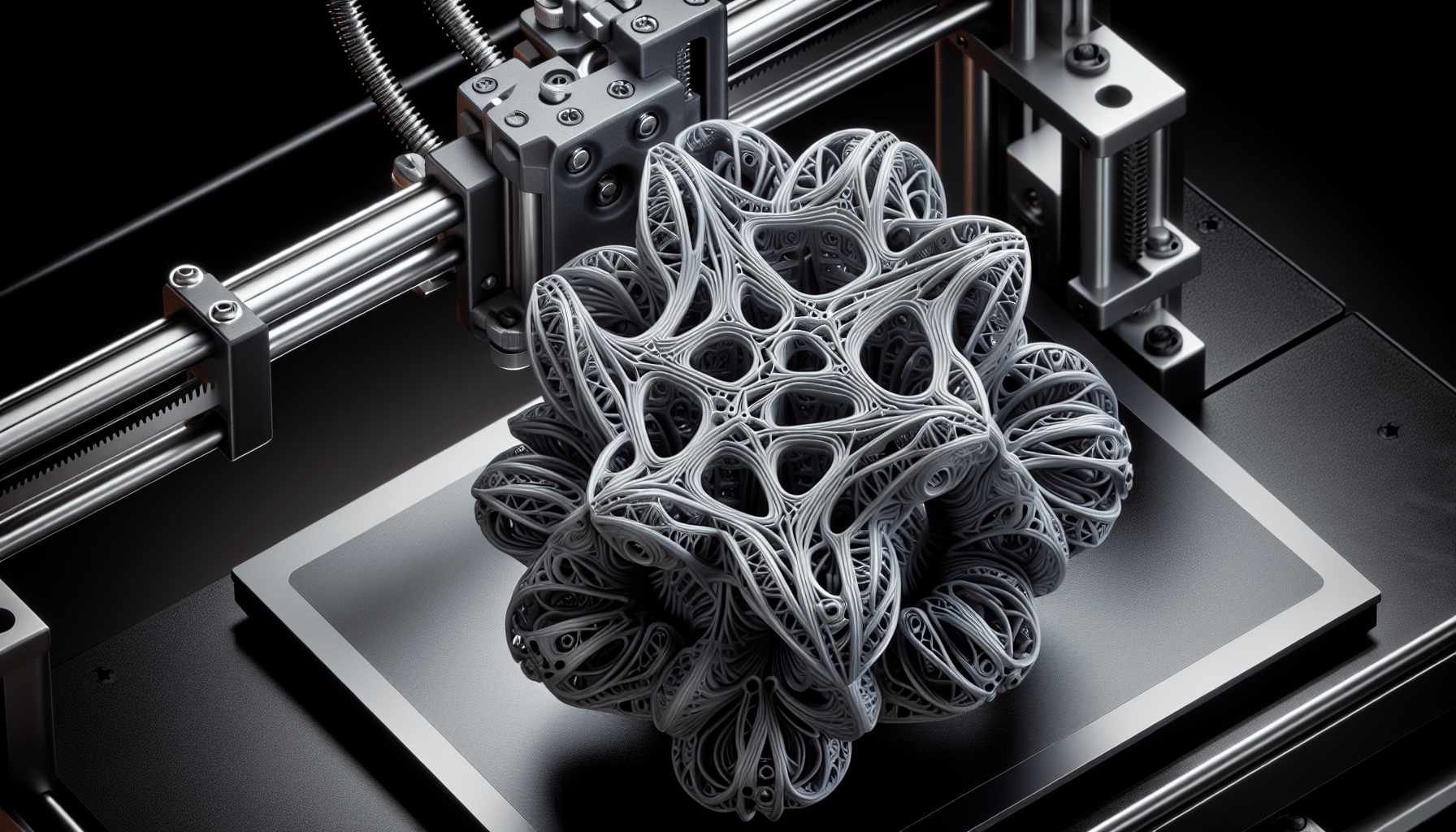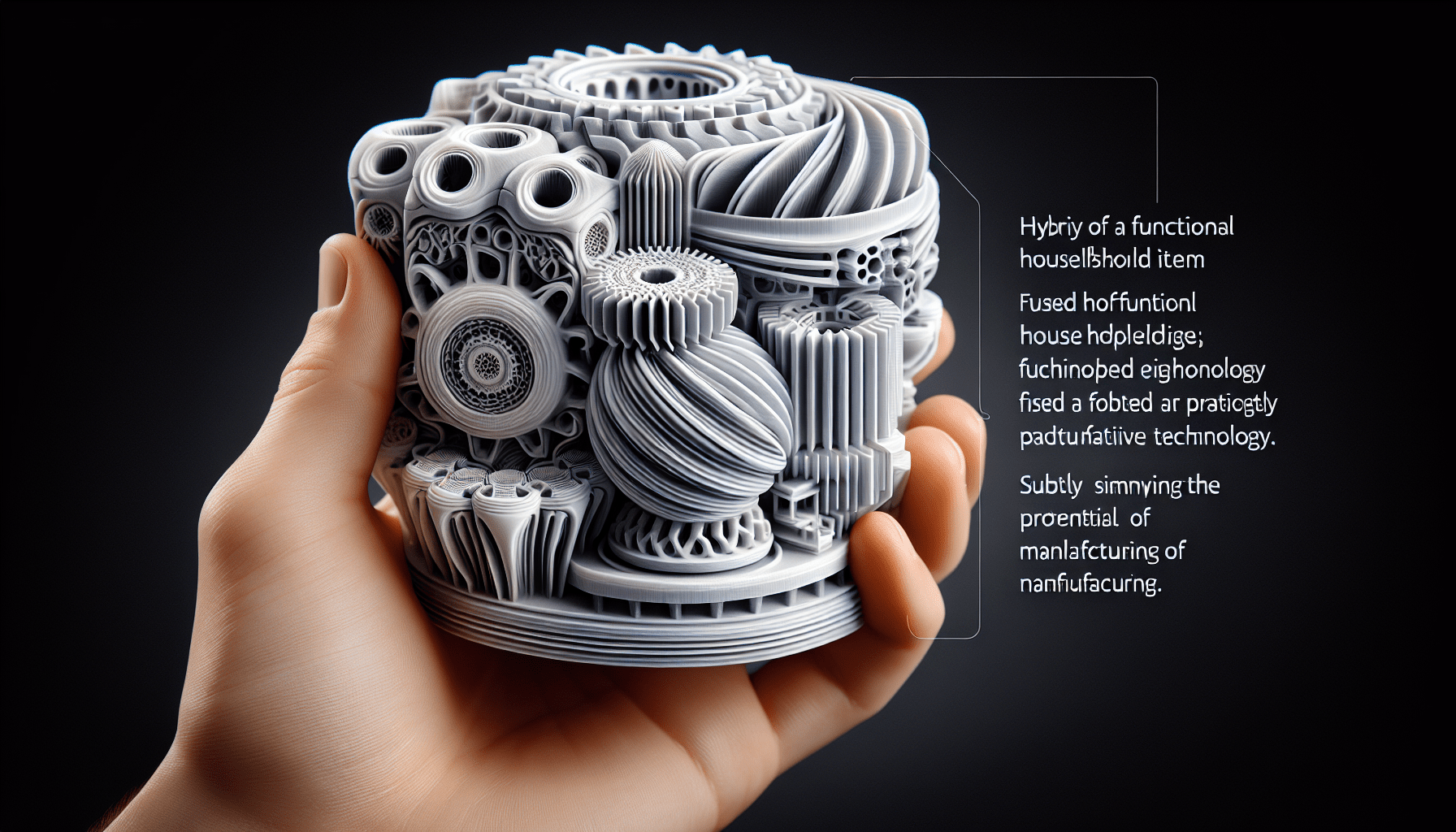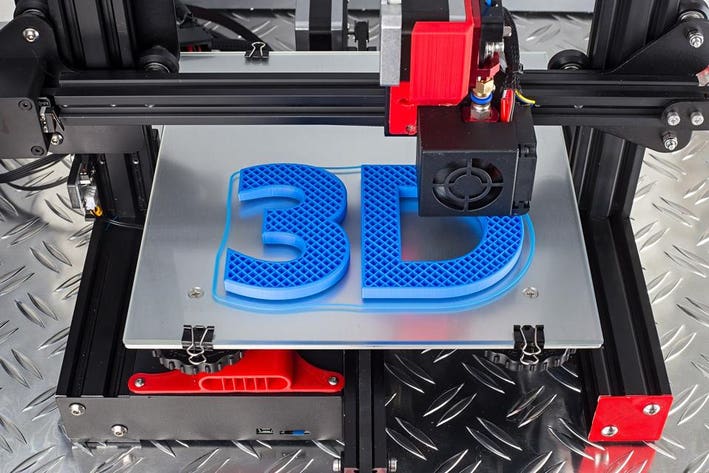Creality 3D Printer, K1 SE Fully Assembled Auto Leveling FDM 3D Printers for Kids and Beginners, 600mm/s Max High-Speed Printing, Core XY All Metal Structure, Larger Print Size 250x220x220mm
$279.00 (as of June 19, 2025 23:45 GMT +00:00 - More infoProduct prices and availability are accurate as of the date/time indicated and are subject to change. Any price and availability information displayed on [relevant Amazon Site(s), as applicable] at the time of purchase will apply to the purchase of this product.)In the world of 3D printing, Axtra3D has made significant strides with its innovative Hybrid Photosynthesis (HPS) process. This process combines the benefits of SLA and LCD resin printing, while overcoming the drawbacks of both. Axtra3D’s focus has shifted towards practical applications of their technology, leading to successful partnerships in the industrial and healthcare sectors. The HPS process has proven its value in producing cost-effective end-use parts, such as automotive fasteners and electrical connectors. Additionally, Axtra3D’s collaboration with various resin providers has expanded the material options for HPS, opening doors to even more applications. By concentrating on the specific needs of their customers and emphasizing application-driven development, Axtra3D is poised for future success.
Axtra3D’s HPS 3D Printing Process

Overview of Axtra3D’s HPS process
Axtra3D is a relatively new player in the 3D printing industry, having emerged just two years ago. Their unique offering is the Hybrid Photosynthesis (HPS) process, which combines the benefits of SLA (Stereolithography) and LCD (Liquid Crystal Display) resin 3D printing. This innovative approach overcomes the disadvantages of both processes and offers a new alternative for additive manufacturing.
Combining the benefits of SLA and LCD resin 3D printing
The HPS process takes advantage of the strengths of both SLA and LCD resin 3D printing. SLA provides high surface quality and accuracy, while LCD offers fast printing speeds. Axtra3D’s HPS system uses a laser to print the exterior perimeters of models, ensuring smooth and precise surfaces. Simultaneously, the interior is quickly printed using an LCD light engine. This unique combination allows for fast 3D printing without compromising on surface quality.
Advantages over traditional 3D printing processes
The HPS process offers several advantages over traditional 3D printing processes. Firstly, it enables faster production rates due to the combination of SLA and LCD technologies. This results in reduced printing time and increased efficiency. Additionally, the HPS process offers high accuracy and surface quality, comparable to SLA. Moreover, Axtra3D’s HPS system is more cost-effective than other 3D printing processes, making it an attractive option for various industries.
Axtra3D’s Focus on Applications
Transition from technology promotion to application focus
In the early stages of its existence, Axtra3D focused on promoting its unique HPS technology. However, as the company gained experience and customer insights, they shifted their focus to applications. This transition reflects a strategic move to align more closely with customer needs and to identify the most promising areas for the HPS process.
Discovering applications best suited for the HPS process
As Axtra3D’s customers started using the HPS process, they discovered applications that are best suited for this unique 3D printing technology. These applications are predominantly found in the industrial and healthcare sectors, where the combination of speed, accuracy, and surface quality offered by HPS provides significant advantages.
Examples of industrial and healthcare applications
Axtra3D has showcased several examples of industrial and healthcare applications that benefit from the HPS process. One such example is automotive fastener production, where Axtra3D’s HPS system enables significant cost and time savings. Another example is electrical connector production, where the HPS process delivers high production capabilities at a lower cost. Additionally, Axtra3D has demonstrated the potential of HPS in industrial molding and injection, as well as high-precision 3D printing.
Automotive Fastener Production
Overview of automotive fastener production
Automotive fasteners play a critical role in vehicle assembly, ensuring the structural integrity and stability of various components. Traditionally, automotive fasteners are manufactured using methods such as machining or casting. Axtra3D’s HPS process offers a viable alternative for fastener production, leveraging the advantages of resin 3D printing.
Cost and time savings using Axtra3D’s HPS process
One of the key benefits of Axtra3D’s HPS process for automotive fastener production is the significant cost and time savings it offers. By batching together a series of fasteners within a single print job, Axtra3D achieves a cost of only US$0.20 per part. The HPS system can produce up to 720 fasteners per day, resulting in substantial cost savings compared to traditional manufacturing methods. Moreover, the HPS process allows for fast printing speeds, with each part taking less than two minutes to produce.
Production rate and scalability
Axtra3D’s HPS system demonstrates high production capabilities for automotive fastener production. With a production rate of 720 fasteners per day, or over 21,000 per month, the HPS process offers scalability for manufacturing needs. This makes it an attractive option for automotive companies looking to streamline their production processes and reduce costs.
Electrical Connector Production
Overview of electrical connector production using Axtra3D’s HPS process
Electrical connectors are crucial components in various industries, including electronics and automotive. They provide the necessary electrical connections between different components and enable the transfer of power or signals. Axtra3D’s HPS process offers a cost-effective and efficient solution for electrical connector production.
Cost and time savings
The HPS process significantly reduces the cost and time required for electrical connector production. By utilizing Axtra3D’s HPS system, manufacturers can produce connectors at a cost of US$0.75 per piece. The production rate can reach up to 72 connectors per job, with each connector taking approximately six minutes to produce. These cost and time savings make the HPS process an attractive option for industries that rely on electrical connectors.
Production capabilities
Axtra3D’s HPS system provides high production capabilities for electrical connector production. With a production rate of up to 6,480 connectors per month, the HPS process offers scalability and efficiency. This makes it well-suited for industries that require a large quantity of connectors within a short timeframe.
Industrial Molding and Injection

$30 off $400+ Anycubic Products with code AC30OFF
Overview of industrial molding and injection using Axtra3D’s HPS process
Industrial molding and injection are widely used processes in manufacturing. These processes involve creating molds for various components and then injecting materials into the molds to produce the final products. Axtra3D’s HPS process offers a unique approach to industrial molding and injection, combining the benefits of resin 3D printing with traditional injection molding.
Printing molds with HPS for traditional injection molding
Axtra3D’s HPS process allows for the 3D printing of molds, which can then be used in traditional injection molding processes. This approach offers several advantages, including faster mold production and the ability to create complex geometries that may be challenging with traditional molds. The HPS-printed molds can withstand repeated injections, making them suitable for industrial applications.
Durability and production capabilities
While 3D printed molds may not be as durable as traditional metal molds, Axtra3D reports that their HPS-printed molds exhibit durability sufficient for up to 300 shots of polypropylene at temperatures up to 300C. This level of durability, combined with the fast production capabilities of the HPS process, makes it a viable option for industrial molding and injection applications.
High-Precision 3D Printing
Overview of high-precision 3D printing with Axtra3D’s HPS process
High-precision 3D printing is crucial for industries that require intricate and precise components. Axtra3D’s HPS process offers a unique solution for high-precision 3D printing, enabling the production of objects with exceptional accuracy and surface quality.
Examples of precise 3D printed objects
Axtra3D has demonstrated the capabilities of their HPS process in producing high-precision objects. One such example is a 500mm ceramic rod with a 0.4mm hole running through its entire length. This level of precision is challenging to achieve with conventional 3D printing processes but is made possible by Axtra3D’s HPS system.
Comparison to other 3D printing processes
In comparison to other 3D printing processes, Axtra3D’s HPS process offers superior accuracy and surface quality. By leveraging the benefits of SLA and LCD resin 3D printing, the HPS system achieves both speed and precision. This makes it a compelling option for industries that require high-precision components.
Advantages for End-Use Part Production
Benefits of using HPS for end-use part production
End-use part production refers to the manufacturing of components that are directly used in the final product. Axtra3D’s HPS process offers several advantages for end-use part production, making it an attractive option for various industries.
Lower per-unit costs and tooling challenges
One of the key benefits of using Axtra3D’s HPS process for end-use part production is the lower per-unit costs. Traditional manufacturing methods often involve significant tooling costs, which can be eliminated with the HPS process. This cost-saving potential makes the HPS process an ideal choice for low-volume production or emergency backup when existing suppliers are unable to deliver on time.
Ideal for low volume production and emergency backup
Axtra3D’s HPS system is well-suited for low-volume production and emergency backup scenarios. The ability to quickly produce parts with high accuracy and surface quality makes it an efficient solution when demand is limited or there is a need for immediate replacement parts. The HPS process eliminates the need for complex tooling and can quickly adapt to changing production requirements.
Partnerships with Resin Providers
Arrangements with resin providers to expand material options
In order to broaden the range of applications for its HPS process, Axtra3D has established partnerships with resin providers. These partnerships enable the use of a broader spectrum of materials, opening up new possibilities for the HPS process. By collaborating with resin providers, Axtra3D ensures that its customers have access to a diverse range of materials suitable for their specific applications.
Broadening the range of applications for HPS
The partnership with resin providers allows Axtra3D to expand the range of applications for its HPS process. Different materials offer unique properties and characteristics, making them suitable for specific applications. By offering a variety of material options, Axtra3D can cater to the needs of different industries and expand the potential applications of its HPS technology.
Benefits of partnering with resin providers
Partnering with resin providers brings several benefits to Axtra3D and its customers. Firstly, it ensures a reliable supply of high-quality materials specifically tailored for the HPS process. Secondly, it allows for continuous innovation and development in resin formulations, optimizing the performance of the HPS process. Additionally, partnering with resin providers facilitates knowledge exchange and expertise sharing, fostering collaboration and advancement in the 3D printing industry.
Strategy for Success
Axtra3D’s focus on applications as a strategic approach
Axtra3D’s strategic approach focuses on applications rather than solely promoting its HPS technology. This shift in focus allows the company to align closely with customer needs and identify the most promising areas for the HPS process. By understanding the specific requirements of different industries, Axtra3D can tailor its offerings and provide targeted solutions that address the unique challenges and demands of each sector.
Alignment with customer needs
By focusing on applications, Axtra3D is better positioned to meet customer needs. This approach enables a deeper understanding of the challenges faced by various industries and allows for the development of solutions that effectively address those challenges. Axtra3D’s customer-centric approach ensures that its products and services are aligned with the requirements and expectations of its target markets.
Implications for future success
Axtra3D’s emphasis on applications is likely to contribute to its future success. By continuously pushing the boundaries of its HPS technology and identifying new applications, Axtra3D can stay at the forefront of the 3D printing industry. This strategic approach enables the company to anticipate market trends, meet customer demands, and maintain a competitive edge in the rapidly evolving additive manufacturing landscape.
Conclusion
In conclusion, Axtra3D’s HPS 3D printing process offers a unique and innovative approach to additive manufacturing. By combining the benefits of SLA and LCD resin 3D printing, the HPS process delivers fast printing speeds, high accuracy, and excellent surface quality. The company’s shift towards focusing on applications demonstrates a strategic approach to aligning with customer needs and identifying the most promising areas for the HPS process. With its wide range of applications, including automotive fastener production, electrical connector production, industrial molding and injection, high-precision 3D printing, and end-use part production, Axtra3D’s HPS process has the potential to significantly impact the manufacturing and production industries. By partnering with resin providers, Axtra3D expands the material options for the HPS process, further broadening its potential applications. Overall, Axtra3D’s focus on practical applications and customer-centric approach positions the company for future success in the additive manufacturing market.
Buy Photon Mono M5 Get Free 1KG Resin








